Home> Company News> Understanding the Principles of Hydraulic Pump Functionality
- AddressNorth Tan Street, Jinan,Shandong
- Factory Address123 Ubi Ave 3 #12-30 Frontier Singapore 408867
- Worktime9:00-18:00(Beijing time)
- Phone(Working Time)86 0531-8299 9952
Hydraulic pumps are essential components in many industrial systems, providing the necessary force to operate machinery and equipment. Understanding how hydraulic pumps work and their functionality is crucial in maintaining the efficiency and reliability of hydraulic systems. The purpose of this paper is to provide a comprehensive overview of hydraulic pump functionality, components, and maintenance.By understanding the principles of hydraulic pump functionality and their components, operators and maintenance personnel can troubleshoot and identify issues more effectively, reducing downtime and maintenance costs. Additionally, knowledge of different types of hydraulic pump systems and their selection criteria can help operators make informed decisions when selecting the appropriate system for their application.
This paper aims to provide a comprehensive understanding of hydraulic pump functionality, including their components, working principles, and different types of hydraulic pump systems. Additionally, the importance of hydraulic pump maintenance and its integration with other maintenance systems will be discussed. Finally, potential future developments in hydraulic pump technology and their possible impacts on industries and society as a whole will be explored.

Understanding Hydraulic Pumps
Hydraulic pumps are devices that convert mechanical energy into hydraulic energy. They are used in hydraulic systems to generate flow and pressure, which is essential in operating machinery and equipment. Hydraulic pumps come in various types, each designed for specific applications and operating conditions.
There are two main categories of hydraulic pumps: positive displacement pumps and dynamic pumps. Positive displacement pumps generate flow by trapping a fixed amount of fluid and then forcing it into the hydraulic system. Dynamic pumps generate flow by using the momentum of the fluid to move it through the pump.
Positive displacement pumps can be further classified into two types: fixed displacement pumps and variable displacement pumps. Fixed displacement pumps deliver a fixed amount of fluid per revolution of the pump shaft. Variable displacement pumps, on the other hand, can vary the amount of fluid delivered per revolution of the pump shaft, providing greater flexibility in controlling the flow rate and pressure in hydraulic systems.
Dynamic pumps can also be classified into two types: centrifugal pumps and axial pumps. Centrifugal pumps work by using an impeller to move fluid through the pump, generating pressure by centrifugal force. Axial pumps, on the other hand, use a series of rotating blades or discs to move fluid through the pump, generating pressure by pushing the fluid in an axial direction.
Hydraulic pumps consist of various components, including the pump housing, impeller or rotor, vanes, pistons, and valves. The pump housing contains the other components and directs the flow of fluid through the pump. The impeller or rotor is responsible for generating the flow of fluid. Vanes, pistons, and valves are used to control the flow rate and pressure of the fluid.
In summary, hydraulic pumps are essential components in hydraulic systems, generating flow and pressure to operate machinery and equipment. There are various types of hydraulic pumps, including positive displacement pumps and dynamic pumps. Each type of hydraulic pump has specific characteristics and advantages depending on the application and operating conditions. Hydraulic pumps consist of different components that work together to generate flow and pressure. Understanding the different types of hydraulic pumps and their components is crucial in selecting the appropriate pump for specific applications and maintaining the efficiency and reliability of hydraulic systems.
Principles of Hydraulic Pump Functionality
Hydraulic pumps play a critical role in a hydraulic system by generating flow and pressure to operate different hydraulic components. Understanding the principles of hydraulic pump functionality is essential to ensure efficient and reliable performance of hydraulic systems.
Hydraulic pumps generate pressure by converting mechanical energy into hydraulic energy. The mechanical energy can come from an electric motor, an internal combustion engine, or a hand crank. The hydraulic energy generated by the pump is then used to operate different hydraulic components, such as hydraulic cylinders or hydraulic motors.
Hydraulic pumps work by drawing hydraulic fluid from a reservoir and then pumping it through a system of valves, hoses, and pipes. The fluid is pressurized and used to perform work, such as lifting heavy loads or moving large objects.
There are two main types of hydraulic pumps: positive displacement pumps and dynamic pumps. Positive displacement pumps operate by trapping a fixed amount of fluid and forcing it through the system. Dynamic pumps operate by imparting velocity to the fluid, which in turn generates pressure.
Positive displacement pumps can be further classified into gear pumps, vane pumps, and piston pumps. Gear pumps are the simplest type of positive displacement pump and are commonly used in low-pressure hydraulic systems. Vane pumps are more complex than gear pumps and can handle higher pressures. Piston pumps are the most complex and versatile type of positive displacement pump and can handle high pressures and flow rates.
Dynamic pumps can be further classified into centrifugal pumps and axial flow pumps. Centrifugal pumps are the most common type of dynamic pump and are used in low-pressure applications. Axial flow pumps are used in high-pressure applications and are designed to move fluid in a straight line along the axis of rotation.
The selection of the appropriate type of hydraulic pump depends on several factors, including the required flow rate, pressure, and efficiency, as well as the type of fluid and the specific application. Understanding the principles of hydraulic pump functionality is essential to ensure that the appropriate type of pump is selected for each application, and that it is operated and maintained properly for optimal performance.
Hydraulic Pump Components and Their Functions
A hydraulic pump consists of various components that work together to generate hydraulic pressure and flow. These components can vary depending on the type of hydraulic pump, but some of the most common components include:
-
Reservoir: The reservoir is the container that holds the hydraulic fluid. The reservoir size depends on the system's flow rate, temperature, and pressure requirements. The reservoir also helps to cool the fluid and remove any contaminants or debris.
-
Pump: The pump is the primary component that generates hydraulic pressure and flow. It draws fluid from the reservoir and sends it through the system at a specific pressure and flow rate.
-
Relief Valve: The relief valve is responsible for maintaining the system's pressure within safe limits. When the pressure exceeds the preset limit, the relief valve opens and releases fluid back into the reservoir.
-
Control Valves: Control valves are used to control the direction, flow, and pressure of the hydraulic fluid. They are responsible for controlling the operation of hydraulic actuators and other system components.
-
Actuators: Actuators are hydraulic devices that convert hydraulic pressure into mechanical force. They can be used to lift, push, pull, or rotate heavy loads.
-
Filters: Filters are used to remove contaminants and debris from the hydraulic fluid. They help to keep the fluid clean and prevent damage to system components.
-
Hoses and Fittings: Hoses and fittings are used to connect the different components of the hydraulic system. They are made of high-pressure materials to withstand the system's pressure and ensure a leak-free connection.
Each component of a hydraulic pump plays a critical role in the system's performance. Proper maintenance and monitoring of these components can help to ensure the system's longevity and prevent costly downtime.
Types of Hydraulic Pump Systems
Hydraulic pump systems come in a variety of configurations to meet the requirements of specific applications. The following are the main types of hydraulic pump systems:
-
Gear Pumps: Gear pumps are one of the most common types of hydraulic pumps. They consist of two gears that mesh together to create a vacuum that pulls fluid into the pump. As the gears rotate, fluid is forced out of the pump and into the system.
-
Vane Pumps: Vane pumps are similar to gear pumps, but they use vanes instead of gears to move fluid. The vanes are located in a rotor that rotates inside a cavity. As the rotor rotates, the vanes slide in and out, creating a vacuum that pulls fluid into the pump.
-
Piston Pumps: Piston pumps use pistons to move fluid through the system. They are more complex than gear and vane pumps and can handle higher pressures and flows. They are commonly used in industrial applications that require high pressure and flow rates.
-
Radial Piston Pumps: Radial piston pumps are similar to piston pumps, but the pistons are arranged radially around a central cam. This design allows for higher pressure and flow rates compared to traditional piston pumps.
-
Axial Piston Pumps: Axial piston pumps use a similar design to radial piston pumps, but the pistons are arranged axially along a central shaft. They can handle even higher pressure and flow rates than radial piston pumps.
-
Screw Pumps: Screw pumps are designed to handle high viscosity fluids and solids. They use a screw to move fluid through the system and are commonly used in applications such as wastewater treatment and food processing.
Each type of hydraulic pump system has its advantages and disadvantages depending on the specific application. The selection of the appropriate hydraulic pump system depends on the flow rate, pressure, and viscosity requirements of the system, as well as the space available for the pump and the power source available. Proper selection ensures optimal system performance, efficiency, and durability.

Applications of Hydraulic Pumps
Hydraulic pumps are widely used in various applications across multiple industries. Their ability to generate high pressure and flow with relatively low input power makes them ideal for heavy-duty applications. Here are some common applications of hydraulic pumps:
-
Construction: Hydraulic pumps are extensively used in construction equipment such as excavators, backhoes, bulldozers, cranes, and loaders. These machines require high power and precision to perform heavy-duty tasks, and hydraulic pumps provide the necessary force and control.
-
Manufacturing: Hydraulic pumps are also used in manufacturing equipment such as presses, shears, and stamping machines. These machines require precise control over the pressure and flow of hydraulic fluid to accurately shape and form metal sheets, plates, and other materials.
-
Agriculture: Hydraulic pumps are used in agricultural machinery such as tractors, combines, and harvesters. These machines require the power and precision of hydraulic systems to perform tasks such as plowing, seeding, harvesting, and irrigation.
-
Mining: Hydraulic pumps are extensively used in mining equipment such as drilling rigs, excavators, and haul trucks. These machines require the power and precision of hydraulic systems to perform tasks such as digging, drilling, and hauling heavy loads.
-
Aerospace: Hydraulic pumps are used in aircraft hydraulic systems to control various functions such as landing gear, flaps, and brakes. These systems require the precision and reliability of hydraulic pumps to ensure safe and efficient operation.
-
Marine: Hydraulic pumps are used in marine equipment such as winches, cranes, and steering systems. These systems require the power and precision of hydraulic pumps to perform tasks such as lifting heavy loads and maneuvering large vessels.
-
Automotive: Hydraulic pumps are used in automotive applications such as power steering and braking systems. These systems require the precision and reliability of hydraulic pumps to ensure safe and efficient operation.
-
Material Handling: Hydraulic pumps are used in material handling equipment such as forklifts and conveyor systems. These systems require the power and precision of hydraulic pumps to lift and move heavy loads.
-
Energy: Hydraulic pumps are used in energy applications such as hydroelectric power plants and oil and gas drilling rigs. These systems require the power and precision of hydraulic pumps to control various functions such as fluid flow and pressure.
-
Medical: Hydraulic pumps are used in medical equipment such as hospital beds, dental chairs, and surgical tables. These systems require the precision and reliability of hydraulic pumps to ensure safe and efficient operation.
In summary, hydraulic pumps are essential components in many different applications across a wide range of industries. Their ability to provide high power and precision control over fluid flow and pressure makes them ideal for heavy-duty applications where other types of pumps may not be suitable. As technology continues to advance, the applications of hydraulic pumps are likely to expand even further, making them an indispensable part of modern industrial and technological processes.
Maintenance of Hydraulic Pumps
Proper maintenance is critical to ensuring the efficient operation and long lifespan of hydraulic pumps. A regular maintenance program that includes inspections, cleaning, and repairs can prevent breakdowns, reduce energy consumption, and extend the lifespan of hydraulic pumps.
The following are some of the maintenance techniques used to maintain hydraulic pumps:
-
Regular Inspection: A regular inspection program is essential to identifying potential problems before they become severe. Inspections should be carried out on a schedule, and the frequency of inspections should be determined based on the environment in which the pump operates.
-
Cleaning: Cleaning is a crucial aspect of hydraulic pump maintenance. Dirt and debris can accumulate on the pump's components, reducing efficiency and causing premature wear. Regular cleaning using a mild cleaning solution can help remove dirt and debris and prevent damage to the pump.
-
Fluid Analysis: Hydraulic fluids can degrade over time, leading to reduced pump efficiency and increased wear. Regular fluid analysis can identify changes in fluid properties and identify potential issues before they cause problems.
-
Repairs and Replacement: Any damaged or worn components should be repaired or replaced promptly. Replacing damaged parts can prevent further damage to the pump and reduce the risk of a catastrophic failure.
-
Preventative Maintenance: A preventative maintenance program can include tasks such as oil changes, filter replacement, and lubrication. These tasks help to keep the pump running efficiently and prevent premature wear.
-
Predictive Maintenance: Predictive maintenance involves monitoring the pump's performance using sensors and other tools to predict potential problems. This approach can help to identify potential issues before they become critical, reducing downtime and repair costs.
Proper maintenance of hydraulic pumps requires specialized knowledge and expertise. It is essential to work with experienced technicians who understand the complexities of hydraulic pump systems and can provide reliable maintenance and repair services.
Integration of hydraulic pump maintenance with other maintenance systems can help to optimize the maintenance process and reduce downtime. Working with a maintenance partner who can provide comprehensive maintenance services for all types of equipment can help to reduce costs and improve overall equipment performance.
In summary, regular maintenance is critical to ensuring the efficient operation of hydraulic pumps. Proper maintenance can help prevent breakdowns, reduce energy consumption, and extend the lifespan of hydraulic pumps. It is essential to work with experienced technicians and integrate maintenance programs with other maintenance systems to optimize the maintenance process and ensure reliable equipment performance.
Potential future developments in hydraulic pump technology and functionality
Hydraulic pump technology has evolved significantly in recent years, and further advancements are expected in the future. Some of the potential developments in hydraulic pump technology and functionality are:
-
Smart Hydraulic Pumps: With the increasing use of automation in various industries, there is a need for more intelligent hydraulic pumps that can adapt to changing conditions in real-time. Smart hydraulic pumps are expected to incorporate advanced sensors and control systems that can monitor and optimize performance based on real-time data.
-
More Efficient Hydraulic Pumps: Energy efficiency is a critical concern in today's world, and hydraulic pumps are no exception. Hydraulic pumps that consume less energy while maintaining high levels of performance are expected to become more prevalent in the future. These pumps may incorporate innovative design features or the use of advanced materials to reduce energy consumption.
-
Eco-Friendly Hydraulic Pumps: The need for eco-friendly and sustainable solutions is growing in many industries, and hydraulic pumps are no exception. In the future, we may see the development of hydraulic pumps that use alternative energy sources, such as solar or wind power, to operate. Additionally, more environmentally friendly hydraulic fluids may be developed to replace traditional petroleum-based fluids.
-
Modular Hydraulic Pump Systems: Modular hydraulic pump systems that can be easily adapted to different applications are expected to become more prevalent in the future. These systems may incorporate interchangeable components or modules that can be quickly and easily swapped out to meet changing system requirements.
-
Use of Artificial Intelligence: Artificial intelligence (AI) is increasingly being used in various industries to optimize performance and reduce costs. In the future, we may see the use of AI in hydraulic pumps to predict system failures, optimize performance, and reduce energy consumption.
The potential impacts of these developments on industries and society as a whole are significant. More efficient and sustainable hydraulic pumps could help reduce energy consumption and greenhouse gas emissions, leading to a cleaner environment. Smart hydraulic pumps and the use of AI could also help reduce maintenance costs and downtime, leading to more efficient and productive operations in various industries.


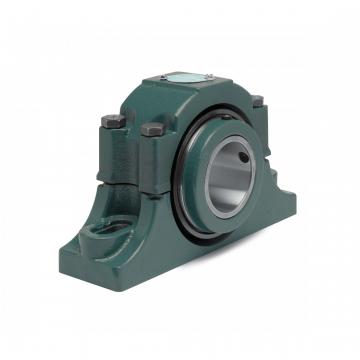 Mounted Tapered Roller Bearings P4B-EXL-212RE
Mounted Tapered Roller Bearings P4B-EXL-212RE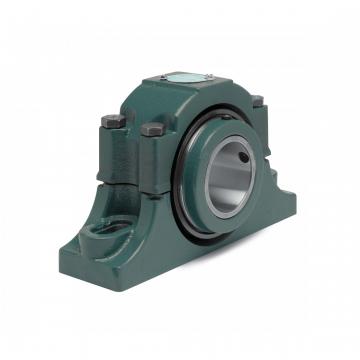 Mounted Tapered Roller Bearings P4B-EXL-400R
Mounted Tapered Roller Bearings P4B-EXL-400R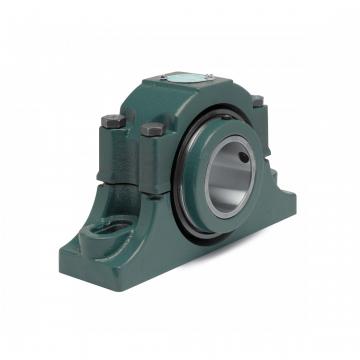 Mounted Tapered Roller Bearings P4B-EXL-400RE
Mounted Tapered Roller Bearings P4B-EXL-400RE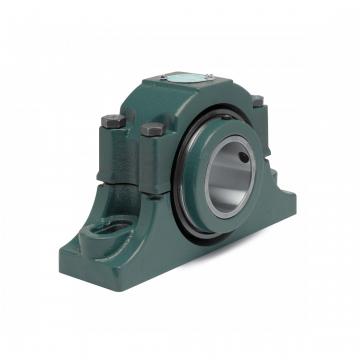 Mounted Tapered Roller Bearings P4B-EXL-315RE
Mounted Tapered Roller Bearings P4B-EXL-315RE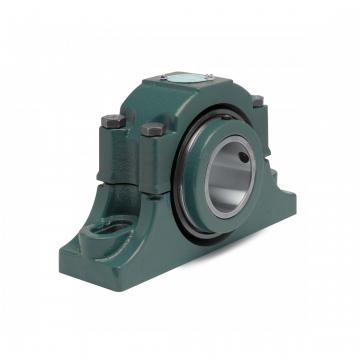 Mounted Tapered Roller Bearings P4B-EXL-207RE
Mounted Tapered Roller Bearings P4B-EXL-207RE